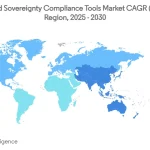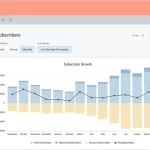
Let’s be honest. For years, the corporate world has talked about diversity in a very specific way. We’ve focused on what we can see, on backgrounds and identities that fit neatly into a spreadsheet. But there’s a whole dimension of human difference we’ve been largely ignoring—and it’s costing us our competitive edge.
I’m talking about neurodiversity. The idea that brains are simply wired differently. It encompasses autism, ADHD, dyslexia, Tourette’s, and a host of other cognitive styles. For too long, these were seen as disorders to be accommodated, if at all. A problem to solve.
But here’s the deal: that perspective is fundamentally broken. Neurodiversity isn’t a HR problem. It’s an innovation goldmine waiting to be tapped.
What Exactly Are We Talking About? Beyond the Jargon
Think of it like this. If everyone in your company is a hammer, then every problem looks like a nail. Sure, you’ll get great at hammering nails. But what happens when you’re faced with a screw, or a piece of delicate pottery? You’re stuck.
Neurodiversity is about stocking your cognitive toolkit with screwdrivers, wrenches, and laser levels. An autistic employee might spot a pattern in user data that everyone else missed—a pattern that leads to a breakthrough product feature. A colleague with ADHD might thrive in the chaotic, rapid-fire environment of a brainstorming session, making connections that seem illogical but are, in fact, brilliant.
These aren’t just feel-good stories. Companies that get this are seeing real results. A 2018 JP Morgan Chase program found that professionals in its Autism at Work initiative were 48% faster and up to 92% more productive than their neurotypical peers in certain roles. That’s not a margin of error; that’s a revolution.
The Innovation Engine: How Different Brains Drive Different Results
So, how does this actually translate to innovation? It’s not magic. It’s cognitive diversity in action.
Pattern Recognition on Overdrive
Many autistic individuals have an exceptional ability to process information and identify patterns. In a world drowning in data, this skill is like a superpower. It can mean identifying a subtle flaw in a million lines of code, predicting a market shift from seemingly unrelated news events, or streamlining a complex logistical process that’s been “the way we’ve always done it” for years.
Creative Chaos and Hyperfocus
The ADHD brain is often a fountain of ideas. It connects disparate concepts in a flash. Sure, this can be chaotic, but chaos is the raw material of innovation. And when a topic captures their interest, the ability to hyperfocus can lead to deep, immersive problem-solving that others simply can’t sustain.
Visual and Spatial Mastery
Dyslexic thinkers often excel in spatial reasoning, narrative thinking, and seeing the big picture. They’re the ones who can look at a complex system and intuitively understand how all the parts connect. This is invaluable for roles in design, architecture, engineering, and strategic planning.
Okay, I’m Convinced. But How Do We Actually Do This?
This is where most companies stumble. You can’t just hire neurodivergent talent and plop them into a neurotypical-designed workplace. That’s like buying a high-performance sports car and trying to run it on watered-down gasoline. It will sputter and fail. You have to rebuild the engine.
Here are some practical, no-nonsense shifts to make.
Rethink the Hiring Playbook
The traditional job interview is a test of social conformity, not competence. It rewards quick, polished answers and eye contact. For many neurodivergent people, it’s a barrier designed to keep them out.
Instead, try:
- Work-sample tests: Give candidates a real-world problem to solve.
- Clear, specific questions: Avoid open-ended, “tell me about a time when…” queries.
- Providing questions in advance: This allows everyone to prepare and show their best thinking.
- Quiet, low-stimulus interview spaces: Or even virtual options.
Craft a Culture of Psychological Safety
Innovation dies in an environment of fear. Neurodivergent employees need to know they can be themselves without masking their natural tendencies.
This means:
- Normalizing the use of noise-canceling headphones.
- Offering flexible work hours and locations.
- Explicitly stating that it’s okay to skip the non-mandatory social mixer.
- Training managers to give clear, direct, and actionable feedback.
Embrace Flexible Work Environments
The one-size-fits-all office is obsolete. Sensory overload is a real productivity killer. A truly inclusive workplace for neurodiversity offers choice.
| Traditional Office Pain Point | Neurodiversity-Inclusive Solution |
| Fluorescent lighting & background noise | Dimmable lights, quiet zones, & designated focus rooms |
| Rigid 9-to-5 schedule | Flexible core hours & focus on output, not presence |
| Vague, changing priorities | Clear project briefs & consistent communication channels |
| Open-plan seating only | A mix of collaborative, quiet, and private workspaces |
The Road Ahead Isn’t a Straight Line
Look, this isn’t a simple checklist you can finish by Friday. Building a neurodiversity inclusion strategy is a journey. There will be missteps. You’ll have to listen, really listen, to the neurodivergent people on your team and be willing to change course.
But the payoff? It’s immense. It’s not just about checking a box or being politically correct. It’s about building a team that can out-think, out-innovate, and out-maneuver the competition. It’s about solving problems you didn’t even know you had.
You’re not just building a more equitable workplace. You’re building a smarter, more resilient, and genuinely more innovative one. The question isn’t whether you can afford to do this. It’s whether you can afford not to.









